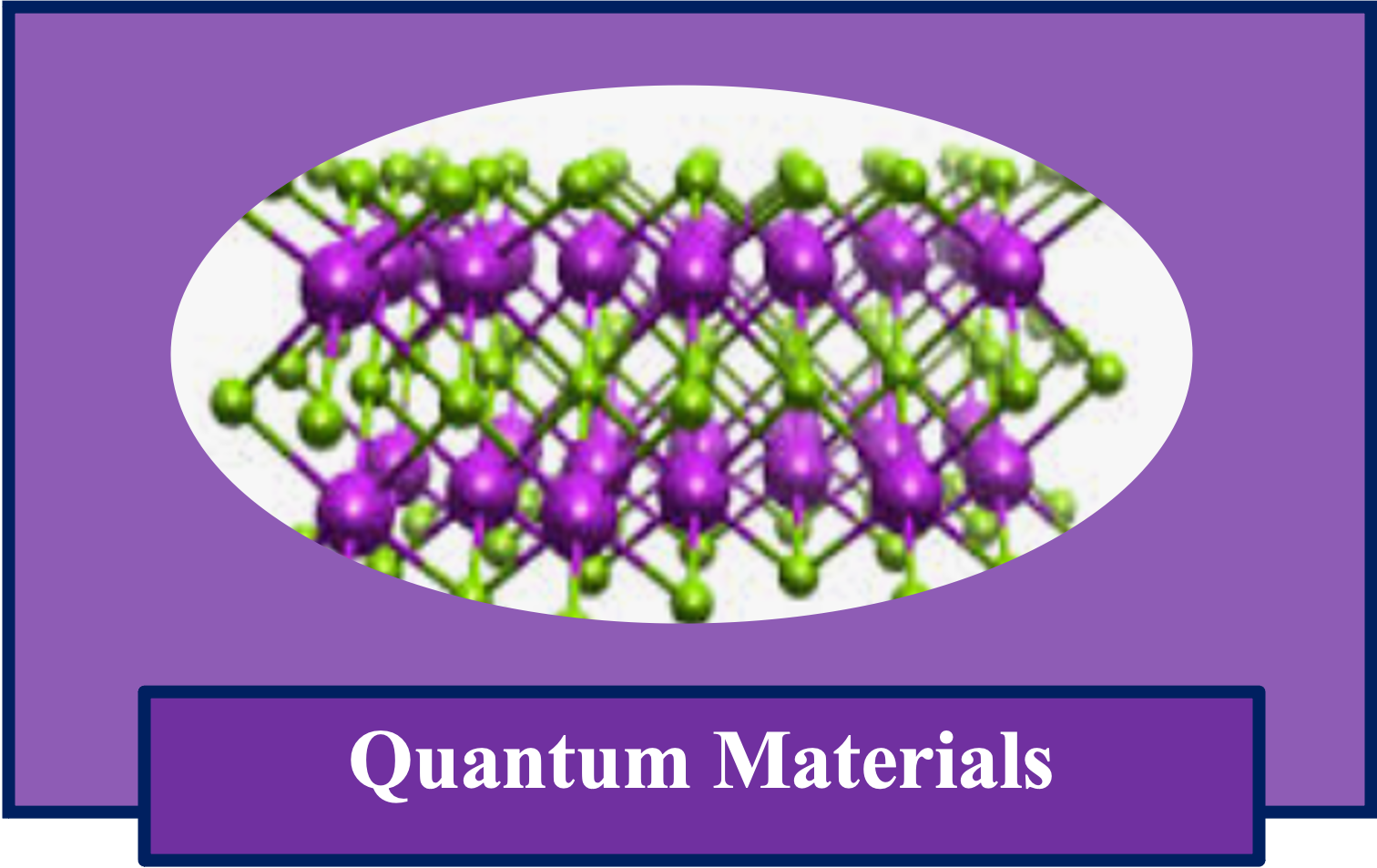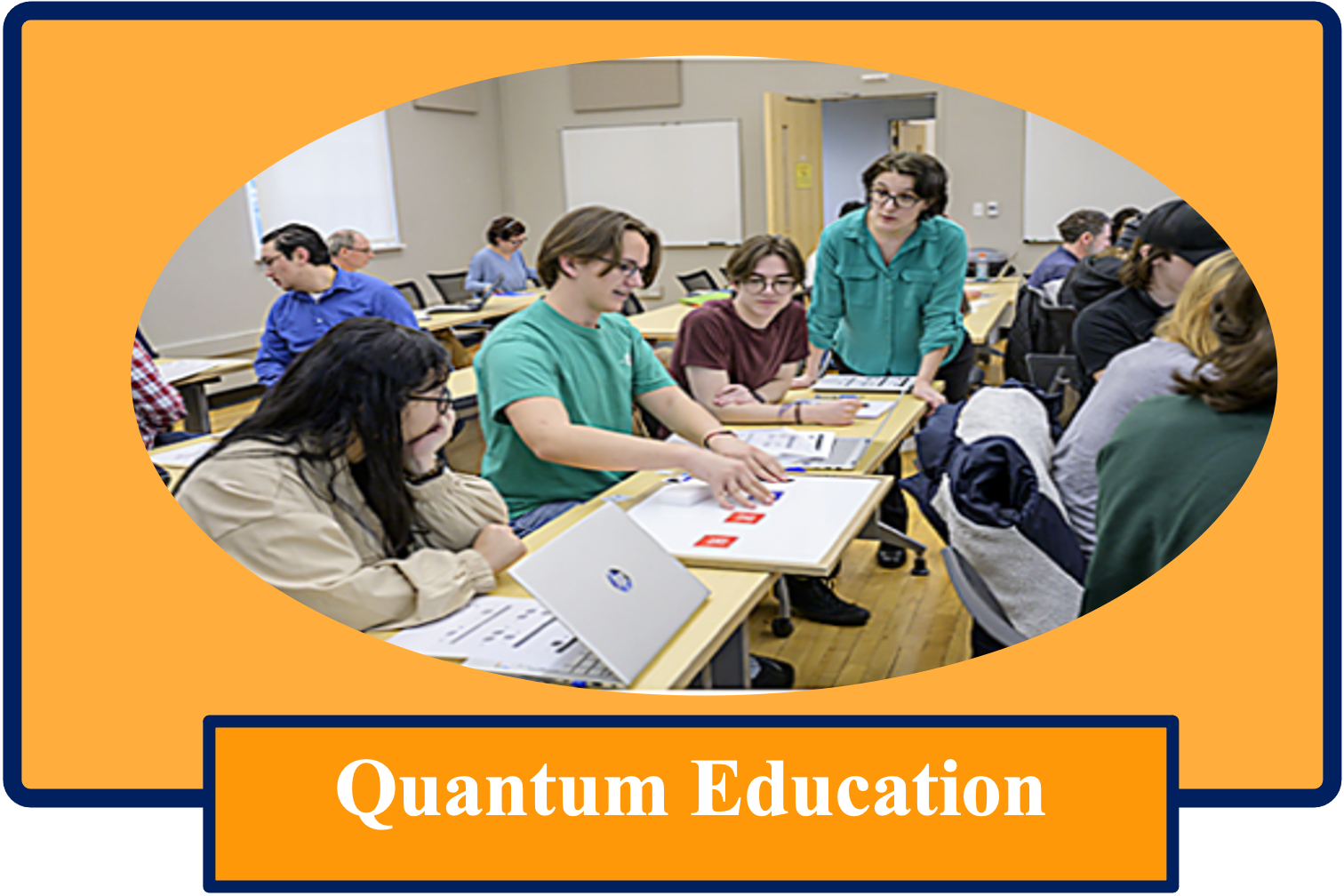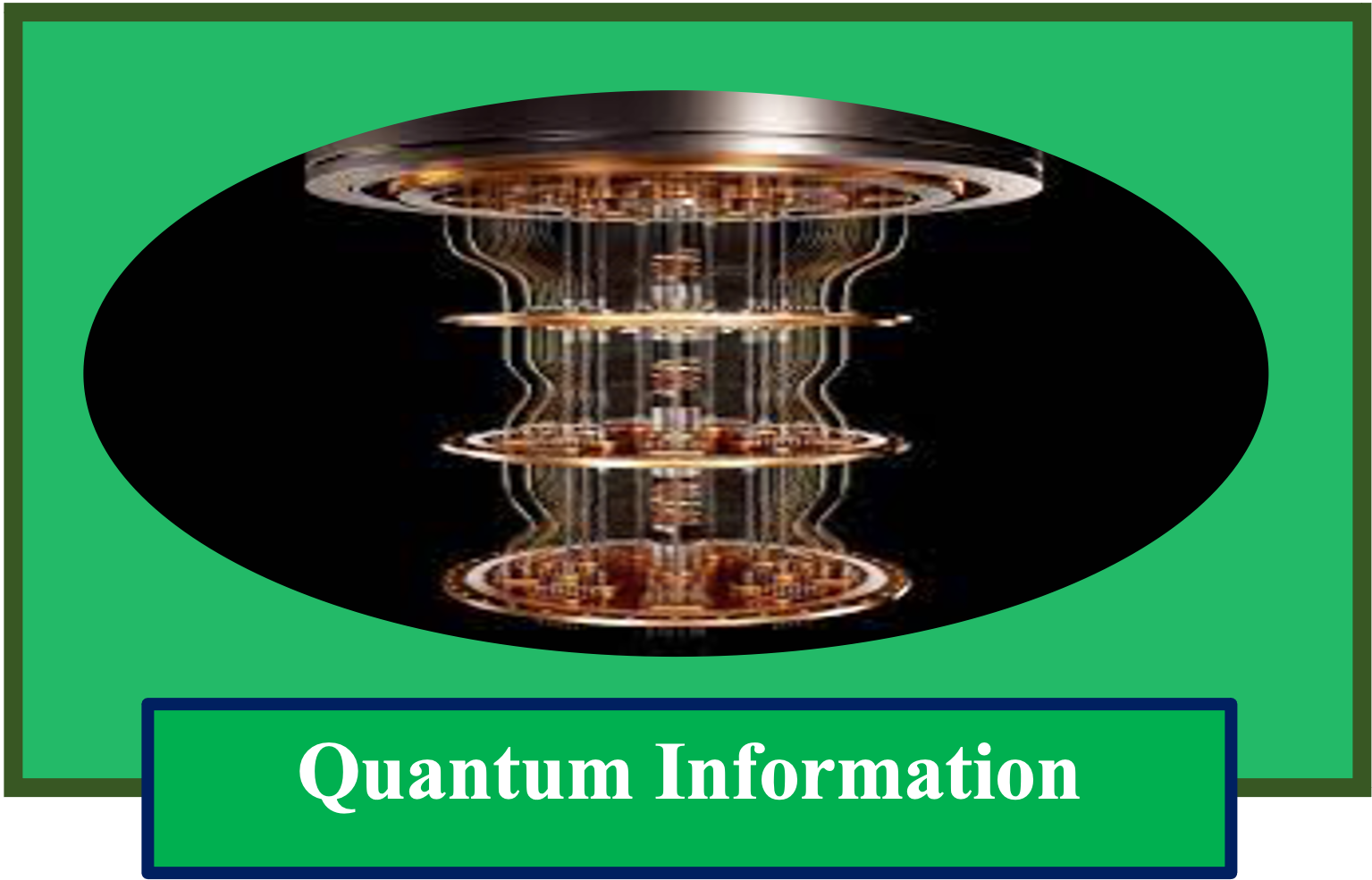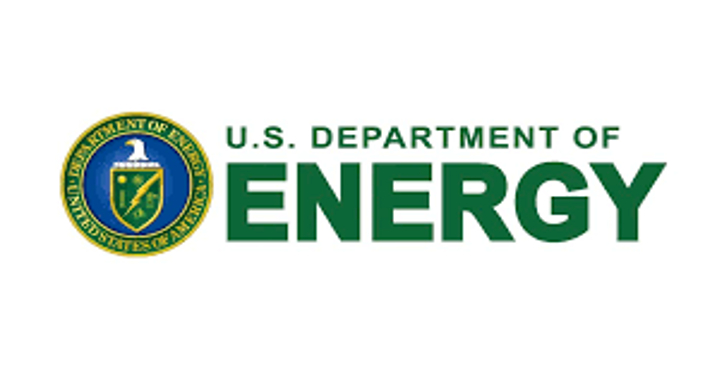Projects
 "Beyond ideal quantum materials: understanding the critical role of disorder and electron-electron interactions", NSF CAREER (2020-2025), PI. H. Terletska, $500K. Inthisproject,we perform computational and theoretical research and education aimed
at better understanding and description of electron localization and phase transitions
in quantum materials, properties of which are governed by strong electron-electron
interactions and disorder. So far, most of the theoretical and computational research
on such quantum materials has been performed on idealized systems, often based on
overly simplified toy models, which do not take into account the intrinsic complexity
of real materials. Understanding exotic phases of matter in newly discovered quantum
materials requires going beyond such simplifications. This research will extend the
existing numerical tools to confront material complexity and enable in-depth study
of electron localization and phase transitions in quantum systems.
"Beyond ideal quantum materials: understanding the critical role of disorder and electron-electron interactions", NSF CAREER (2020-2025), PI. H. Terletska, $500K. Inthisproject,we perform computational and theoretical research and education aimed
at better understanding and description of electron localization and phase transitions
in quantum materials, properties of which are governed by strong electron-electron
interactions and disorder. So far, most of the theoretical and computational research
on such quantum materials has been performed on idealized systems, often based on
overly simplified toy models, which do not take into account the intrinsic complexity
of real materials. Understanding exotic phases of matter in newly discovered quantum
materials requires going beyond such simplifications. This research will extend the
existing numerical tools to confront material complexity and enable in-depth study
of electron localization and phase transitions in quantum systems.
- "Development of MuST, A Multiple Scattering Theory based Computational Software for First Principles Approach to Disordered Materials", NSF-OAC (2019-2023), PI. H. Terletska $135K. This project aims to build the computer software infrustructure that will enable the first principle study of disorder effects in quantum materials and to accelerate the discovery of materials essential for industry and information technology applications. The effect of disorder in materials is of great fundamental and technological interest. Disorder disrupts the periodic arrangement of atoms in perfect materials. It profoundly affects materials properties and can provide a valuable tool in changing and controlling their physical properties. The best-known example is the transistor and other silicon components which are controlled through the introduction of disorder. Quantum mechanical states in semiconductors induced by introducing impurities and disorder can dramatically increase the efficiency of solar cells. There are many other materials of potential technological interest, such as high entropy alloys, dilute magnetic semiconductors, and topological insulators where disorder plays an essential role. Being able to understand, control, and predict the disorder effects in real physical systems is essential for the development of new structural and functional materials for future technological applications.
- "New Density Functional Solution for Nondynamic and Strong Correlation" NSF (2017-2021), PI. Jing Kong $399,982. The strong correlation problem is the last frontier of Kohn-Sham Density Functional Theory (KS-DFT). It accounts for most of the failures of DFT for molecular and material systems. In this work, an accurate treatment of nondynamic/strong correlation is being developed based on single-determinant KS-DFT. The general-purpose functional treats strong correlation to the same degree of accuracy as current mainstream functionals treat weakly correlated molecular and extended systems. It is designed so that it can be implemented with sufficient efficiency for routine chemical applications with accurate treatment of both dynamic and nondynamic correlations. To achieve this goal, a general framework for nondynamic correlation is being developed based on the single-determinant KS scheme, subject to exact conditions. These conditions are specific for nondynamic correlation with degeneracy included and serve as guidelines for the development of a new model functional. Together with the development of an extensive benchmark database for nondynamic and strong correlation, and a new algorithm for efficient implementation, this functional significantly broadens the application of DFT to chemical and materials science problems involving electron correlation of all strengths. The software and the corresponding features produced in this project are made available through open source programs and open source distribution sites such that it can be used with other programs. The availability of the source code also facilitates others to develop new DFT methods. This research is expected to have a major impact on the nascent Computational Science PhD Program at MTSU, one of a handful in the country.
- "Development of MuST+, A Multiple Scattering Theory based Computational Software for
First Principles Approach to Disordered and Interacting Systems", NSF OAC project
(pending), PI. H. Terletska in collaboration with Carnegie Mellon, FSU, LSU, ORNL, Arizona State University,
$600K.
This project is an extension of the MuST project towards the disorder systems with strong correlations. The main objective of this proposal is to build a US-led software package that treats strongly correlated materials with chemical disorder from first principles, and ultimately to accelerate the discovery of quantum materials essential for industry and information technology applications. The software product of the new project will be called MuST+, as it is built upon the successful MuST package, an open-source software package funded by CSSI in 2019, with additional functionalities designed for proper treatment of strong correlation effects and properties related to excited states. Like its predecessor, MuST+ will be made available on GitHub as a self-contained open-source package with detailed online documentations.
- "Disordered and correlated systems out of equilibrium", Department of Energy (pending), PI. H. Terletska in collaboration with Dr. Herbert Fotso, Un. of Buffalo.This project focuses on understanding quantum systems out of equilibrium. Although most studies of strongly correlated systems away from equilibrium have focused on clean systems, it is well known that disorder can affect these dynamics in various nontrivial ways. We have recently introduced solution for the nonequilibrium dynamics of an interacting disordered system. This approach adapts the combination of the equilibrium dynamical mean field theory (DMFT) and the equilibrium coherent potential approximation (CPA) methods to the nonequilibrium many-body formalism, for the dynamics of interacting disordered systems away from equilibrium. With this new method, we can observe via the time-dependence of different physical observables, the effect of disorder on the relaxation of the system as a function of final interaction strength. This real-time characterization has the potential to shed new light on the fundamental role of disorder in the nonequilibrium dynamics of interacting quantum systems. Funded.
- "Beginnings: Creating and Sustaining a Diverse Community of Expertise in Quantum Information
Science (EQUIS) Across the South-Eastern United States", NSF (pending), $1M (2023-2026),
PI: H. Terletska, Co-PIs: R. Henderson, N. Naseri, R. Otter, G. Ruston. This project aims at creating and sustaining a diverse community of expertise in quantum
information science (EQUIS) acr
 oss the Southeastern United States. The project is proposed by a team of investigators
from the University of Tennessee at Chattanooga, Middle Tennessee State University,
Tennessee Tech University, Fisk University, and Auburn University, aiming to advance
collaborative quantum information science education and workforce development in Tennessee
and Alabama. Award link: https://www.nsf.gov/awardsearch/showAward?AWD_ID=2322591&HistoricalAwards=false
oss the Southeastern United States. The project is proposed by a team of investigators
from the University of Tennessee at Chattanooga, Middle Tennessee State University,
Tennessee Tech University, Fisk University, and Auburn University, aiming to advance
collaborative quantum information science education and workforce development in Tennessee
and Alabama. Award link: https://www.nsf.gov/awardsearch/showAward?AWD_ID=2322591&HistoricalAwards=false
ExLENT
-
ExpandQISE: Track 1: Quantum@MTSU: Building QISE Research and Education in Middle Tennessee
Realizing efficient photon-mediated interfaces between various qubit systems poses a significant challenge in achieving scalable quantum technologies. The primary objective of this project is to provide theoretical modeling and analysis to facilitate precise control of the spectral properties of various quantum emitters. Using external field protocols, the project team can overcome limiting spectral behaviors like spectral diffusion, essential for enhancing quantum information processing (QIP) operations that require spectral overlap between distinct qubits. Building on the project team's recent successes in modifying qubit emission spectra with external
field protocols, the project team aims to improve the efficiency of two-photon interference
between quantum emitters in different environments. This project will expand on the
team's previous efforts to develop alternative protocols for two-level and three-level
systems, quantifying their impact on specific QIP operations such as two-photon interference,
state transfer, transduction, and quantum memories. These protocols hold significant
potential to enhance the efficiency of essential photon-mediated QIP tasks. The project
team's ultimate goal is to integrate these control protocols into quantum network
simulators, demonstrating tangible improvements in network performance. Through educational
and outreach activities, this project aims to foster a diverse skilled QISE workforce
in Middle Tennessee. The project offers a wide range of learning opportunities, providing
access to the undergraduate QISE curriculum, early research training, specialized
workshops for underrepresented groups, and mentoring opportunities. The project team
will also conduct teacher training in QISE and engaging summer camps for high-school
students, igniting early awareness and interest in quantum science. As a nucleus for
QISE initiatives, this project strives to establish sustainable research and education
at Middle Tennessee State University, contributing to the advancement of quantum workforce
development in the Middle Tennessee region.
project team's recent successes in modifying qubit emission spectra with external
field protocols, the project team aims to improve the efficiency of two-photon interference
between quantum emitters in different environments. This project will expand on the
team's previous efforts to develop alternative protocols for two-level and three-level
systems, quantifying their impact on specific QIP operations such as two-photon interference,
state transfer, transduction, and quantum memories. These protocols hold significant
potential to enhance the efficiency of essential photon-mediated QIP tasks. The project
team's ultimate goal is to integrate these control protocols into quantum network
simulators, demonstrating tangible improvements in network performance. Through educational
and outreach activities, this project aims to foster a diverse skilled QISE workforce
in Middle Tennessee. The project offers a wide range of learning opportunities, providing
access to the undergraduate QISE curriculum, early research training, specialized
workshops for underrepresented groups, and mentoring opportunities. The project team
will also conduct teacher training in QISE and engaging summer camps for high-school
students, igniting early awareness and interest in quantum science. As a nucleus for
QISE initiatives, this project strives to establish sustainable research and education
at Middle Tennessee State University, contributing to the advancement of quantum workforce
development in the Middle Tennessee region. - This project is in lcose colalboration with Dr. Herbert Fotso, University of Buffalo.
Aknowledgement: NSF-CAREER # 1944974, NSF-OAC # 1931367, NSF-CHEM # 1665344, NSF-IUSE, ExLENT 2322591, NSF ExpandQISE 2328752, DOE grant #


By: Hanna Terletska. Email: hanna.terletska@mtsu.edu


